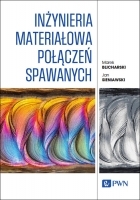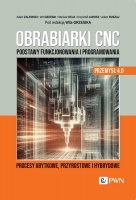Mathematical modeling of maximum height of roughness profile in turning with using wiper insert geometry *
Matematyczne modelowanie maksymalnej wysokości profilu chropowatości po toczeniu ostrzami z geometrią wiper
Mechanik nr 10/2016 - X Szkoła Obróbki Skrawaniem, XXXIX Naukowa Szkoła Obróbki Ściernej
STRESZCZENIE: Przedstawiono modele matematyczne do prognozowania maksymalnej wysokości profilu chropowatości podczas skrawania ostrzami typu Wiper. Zidentyfikowano cztery przypadki, które pojawiają się podczas kształtowania tymi ostrzami w zależności od wartości posuwu f. Zwrócono uwagę na pewne niejasności i różnice w definiowaniu geometrii wiper.
SŁOWA KLUCZOWE: modelowanie matematyczne, geometria Wiper, toczenie, profil chropowatości
ABSTRACT: This paper presents mathematical models for predicting the maximum height of roughness profile using a wiper insert. Identified are four characteristic cases that occur turning when used wiper insert geometry as a function of the feed f. It also notes several inconsistencies and differences regarding the definition of wiper insert geometry.
KEYWORDS: mathematical modeling, wiper insert geometry, turning, roughness profile
BIBLIOGRAFIA / BIBLIOGRAPHY:
- Cichosz P., Kołodziej M., Kowalski M. „Kształtowanie warstwy wierzchniej przedmiotów obrabianych ostrzami typu Wiper”. Obróbka skrawaniem wysoka produktywność. Oficyna Wydawnicza Politechniki Wrocławskiej, Wrocław 2007, No.1, s. 199÷204.
- Karolczak P., Kowalski M. “Influence of use of wiper blades upon surface roughness in machining austenitic stainless steel”. Progressive and innovative technology and manufacturing techniques, 5.–7.9.2012, Papradno, 5-9.
- D’Addona D.M., Raykar S.J. “Analysis of surface roughness in hard turning using wiper insert geometry”. Procedia CIRP 41 (2016): pp. 841÷846.
- Özel T., Karpat Y., Figueria L., Davim J.P. “Modeling of surface finish and tool flank wear in turning of AISI D2 steel with ceramic wiper inserts”. Journal of Materials Processing Technology 189 (2007): pp. 192÷198.
- Abbas A.T.M. “Comparative assessment of wiper and conventional carbide inserts on surface roughness in the turning of high strength steel”. Journal of Materials Science Research. Vol. 5, No. 1; 2016: pp. 32÷45.
- Özel T., Correia A.E., Davim J.P. „Neural network process modeling for turning of steel parts using conventional and wiper inserts”. Int. J. Materials and Product Technology. Vol. 35, No. 1/2, 2009: pp. 246÷258.
- SANDVIK COROMANT. “Metalworking products, Turning tools”. 2000.
- SANDVIK COROMANT. „Poradnik obróbki skrawaniem”. 2005.
- ISO 4287:1997. Geometrical Product Specifications (GPS) – Surface texture: Profile method – Terms, definitions and surface texture parameters.

























